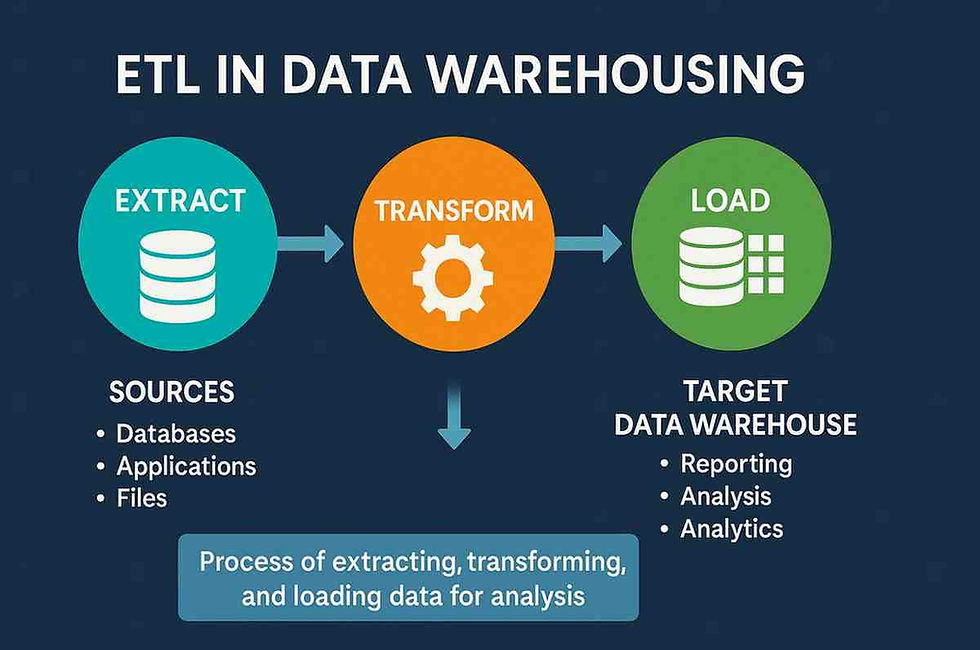Elements of Selenium: Guide to Web Element Interaction
- Gunashree RS
- May 24
- 6 min read
Understanding the elements of Selenium is crucial for anyone diving into web automation and testing. Whether you're a beginner taking your first steps or an experienced developer looking to refine your skills, mastering Selenium elements will significantly enhance your automated testing capabilities.
Selenium WebDriver serves as the backbone of modern web automation, and at its core lies the concept of web elements – the building blocks that make interaction with web pages possible. These elements represent everything from buttons and text fields to complex interactive components that users encounter on websites.
What Are Selenium Elements and Why Do They Matter?
Selenium elements are essentially representations of HTML elements within your automated test scripts. Think of them as digital handles that allow your code to interact with web page components just like a human user would. Every clickable button, text input field, dropdown menu, or image on a webpage becomes an element that Selenium can identify, manipulate, and interact with.
The importance of understanding these elements cannot be overstated. They form the foundation of every automated test case, enabling you to simulate real user interactions such as clicking buttons, filling forms, selecting options, and navigating through web applications. Without proper element handling, your automation scripts would be nothing more than empty shells.
Modern web applications are becoming increasingly complex, with dynamic content, single-page applications, and rich user interfaces. This complexity makes element identification and interaction both more challenging and more critical for successful test automation.

Essential Element Locating Strategies in Selenium
Finding elements on a webpage is the first step in any automation task. Selenium provides multiple strategies to locate elements, each with its own strengths and use cases.
ID Locator Strategy: The ID locator is often considered the gold standard for element identification. HTML IDs should be unique within a page, making them reliable and fast for element location. When an element has a stable ID attribute, this becomes your go-to locating strategy.
Name Attribute Locating: Similar to IDs, name attributes provide another reliable way to identify elements. This approach works particularly well with form elements where name attributes are commonly used for server-side processing.
Class Name Identification: Class names offer another pathway to element identification, though they require more caution since multiple elements often share the same class. This strategy works best when combined with other locating techniques or when the class name is unique enough.
Tag Name Selection: Tag name locators help when you need to interact with elements based on their HTML tag type. This approach is useful for generic operations or when working with simple page structures.
Link Text and Partial Link Text: These specialized locators are designed specifically for anchor tags (links). Link text matching allows you to find links based on their visible text content, while partial link text provides flexibility when dealing with dynamic or lengthy link texts.
XPath and CSS Selectors: XPath and CSS selectors represent the most powerful and flexible locating strategies. They enable complex element identification based on hierarchical relationships, attribute combinations, and sophisticated matching patterns. While more complex to write, they provide unmatched flexibility for challenging element identification scenarios.
Core Element Interaction Methods
Once you've successfully located elements, the next step involves interacting with them effectively. Selenium provides various methods to simulate user actions.
Clicking and Button Interactions: The click() method simulates mouse clicks on elements. This fundamental interaction works with buttons, links, checkboxes, radio buttons, and any clickable element. Understanding when and how to use different clicking strategies can prevent common automation failures.
Text Input and Form Handling: Sending text to input fields requires the sendKeys() method. This goes beyond simple text entry – it can simulate keyboard inputs, special keys, and complex text manipulation scenarios. Form handling often involves multiple elements interactions working together seamlessly.
Selection and Dropdown Management: Dropdown menus and select elements require specialized handling. Selenium provides dedicated methods for option selection, multi-select scenarios, and dropdown state management. These interactions often involve multiple steps and careful timing considerations.
Element State Verification: Checking element states – whether they're visible, enabled, selected, or present – forms a critical part of robust automation scripts. These verification methods help ensure your scripts respond appropriately to changing page conditions.
Advanced Element Handling Techniques
Modern web applications present unique challenges that require sophisticated element handling approaches.
Dynamic Element Management: Many contemporary websites generate content dynamically, meaning elements appear, disappear, or change properties based on user interactions or data loading. Handling these dynamic elements requires understanding timing, explicit waits, and conditional logic within your automation scripts.
Wait Strategies and Timing: Effective element interaction often depends on proper timing. Explicit waits, implicit waits, and fluent waits each serve different purposes in ensuring elements are ready for interaction before your script attempts to use them.
Element Collections and Bulk Operations: Sometimes, you need to work with multiple similar elements simultaneously. Selenium allows you to find collections of elements and perform bulk operations, which is particularly useful for data-driven testing scenarios or repetitive interactions.
Frame and Window Context Management: Complex web applications often use frames, iframes, or multiple windows. Successfully interacting with elements in these contexts requires understanding how to switch between different contexts and maintain proper focus throughout your automation workflow.
Best Practices for Selenium Element Management
Developing maintainable and reliable automation scripts requires following established best practices for element handling.
Robust Locator Selection: Choose locators that remain stable across application updates. Prefer IDs and names over XPath when possible, but don't hesitate to use complex selectors when they provide better stability. Always consider the maintenance implications of your locator choices.
Error Handling and Recovery: Implement comprehensive error handling for element interactions. Web applications can behave unpredictably, and robust scripts should handle scenarios where elements aren't found, interactions fail, or unexpected page states occur.
Performance Optimization: Efficient element handling contributes to faster test execution. This includes choosing appropriate wait strategies, minimizing unnecessary element searches, and structuring your code to avoid repetitive operations.
Maintainable Code Structure: Organize your element interactions using page object patterns or similar structural approaches. This makes your automation code more maintainable, reusable, and easier to understand for team collaboration.
Common Challenges and Solutions
Working with Selenium elements presents various challenges that automation engineers frequently encounter.
Stale Element References: Web pages often refresh or modify their DOM structure, causing previously located elements to become stale. Understanding how to handle and prevent stale element exceptions is crucial for reliable automation.
Timing and Synchronization Issues: Modern web applications load content asynchronously, creating timing challenges for automation scripts. Learning to implement appropriate wait strategies and synchronization techniques prevents many common automation failures.
Cross-Browser Compatibility: Different browsers may handle elements slightly differently. Writing element interactions that work consistently across multiple browsers requires understanding these differences and implementing appropriate compatibility strategies.
Frequently Asked Questions
What is the most reliable way to locate elements in Selenium?
ID locators are generally the most reliable when available, as they should be unique within a page. However, the best approach depends on your specific application and the stability of different attributes over time.
How do I handle dynamic elements that change frequently?
Use explicit waits with expected conditions, implement retry mechanisms, and consider using more flexible locators like XPath or CSS selectors that can adapt to minor changes in element structure.
Why do my element interactions sometimes fail intermittently?
Intermittent failures often result from timing issues, dynamic content loading, or stale element references. Implementing proper wait strategies and error handling typically resolves these issues.
Can I interact with hidden elements in Selenium?
Selenium cannot interact with elements that are not visible to users. You may need to make elements visible first or use JavaScript execution for special cases.
How do I choose between XPath and CSS selectors?
Both are powerful options. CSS selectors are generally faster and more readable, while XPath offers more functionality for complex scenarios like text-based selection and advanced traversal.
What should I do when an element is present but not clickable?
This often indicates the element is covered by another element or not yet ready for interaction. Use explicit waits for the element to be clickable, or investigate if you need to interact with a different element.
How can I verify that an element interaction was successful?
Implement verification steps after interactions, such as checking for expected page changes, new element appearances, or state changes that confirm the interaction succeeded.
What's the best approach for handling multiple similar elements?
Use findElements() to get collections of similar elements, then iterate through them or select specific ones based on index or additional criteria.
Key Takeaways
• Element identification forms the foundation of all Selenium automation, requiring mastery of various locator strategies for different scenarios
• Multiple locating methods exist, including ID, name, class name, tag name, XPath, and CSS selectors, each with specific use cases and reliability characteristics
• Interaction methods go beyond simple clicking to include text input, dropdown selection, state verification, and complex user workflow simulation
• Dynamic content handling requires sophisticated wait strategies, timing considerations, and robust error handling mechanisms
• Best practices emphasize stable locator selection, comprehensive error handling, performance optimization, and maintainable code structure
• Common challenges include stale element references, timing issues, and cross-browser compatibility concerns that require specific solutions
• Advanced techniques cover dynamic element management, frame switching, bulk operations, and context management for complex applications
• Successful automation depends on understanding both technical implementation details and broader strategic approaches to element handling




Developers who dive into Selenium often debate how best to organize tests for dynamic UIs. Many agree that stability matters more than fancy frameworks. When an unexpected integration error happens, finding prompt support sometimes using resources such as https://unity-technologies.pissedconsumer.com/customer-service.html can save hours of trial and error. It’s a reminder that learning automation isn’t just about code syntax; it’s about communication, patience, and knowing where to turn when scripts don’t behave as planned.
Link INDOVIP138
indovip138
indovip138
indovip138
indovip138
indovip138
indovip138
indovip138
indovip138
indovip138
indovip138
indovip138
indovip138
indovip138
indovip138
indovip138
indovip138
indovip138
indovip138
indovip138
indovip138
indovip138
indovip138
indovip138
indovip138
indovip138
indovip138
indovip138
indovip138
indovip138
indovip138
indovip138
indovip138